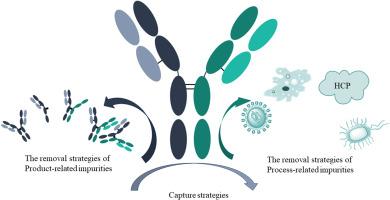The downstream purification of bispecific antibodies
IF 4.6
Q2 MATERIALS SCIENCE, BIOMATERIALS
引用次数: 0
Abstract
Bispecific antibodies, a class of therapeutic antibodies, can simultaneously bind to two distinct targets. Compared with monospecific antibodies, bispecific antibodies offer advantages, including superior efficacy and reduced side effects. However, because of their structural complexity, the purification of bispecific antibodies is highly challenging. The purification process must strike a delicate balance between purity and productivity, eliminating a broad spectrum of contaminants, including product-related and process-related impurities, while also maximizing the yield wherever feasible. This review systematically describes the strategies for bispecific antibody capture, the elimination of product-related impurities, and the mitigation of the formation of process-related impurities, thereby, providing guidance for the development of downstream purification processes for bispecific antibodies.

双特异性抗体的下游纯化。
双特异性抗体是一类治疗性抗体,可同时与两个不同的靶点结合。与单特异性抗体相比,双特异性抗体具有疗效更佳、副作用更小等优点。然而,由于其结构复杂,双特异性抗体的纯化极具挑战性。纯化过程必须在纯度和产量之间取得微妙的平衡,既要剔除各种杂质,包括与产品和工艺相关的杂质,又要尽可能提高产量。本综述系统地阐述了双特异性抗体捕获、消除产品相关杂质和减少工艺相关杂质形成的策略,从而为双特异性抗体下游纯化工艺的开发提供指导。
本文章由计算机程序翻译,如有差异,请以英文原文为准。
求助全文
约1分钟内获得全文
求助全文

 求助内容:
求助内容: 应助结果提醒方式:
应助结果提醒方式:


